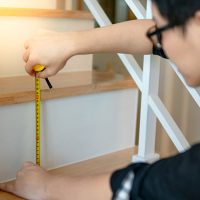Different And Unique Ways Of Showing Property Owners Were Negligent

When you fall on someone else’s property, and there is a lawsuit filed, to see if the Defendant is liable, many lawyers and law firms look at the standard factors and ask the standard questions. These are often questions that revolve around whether the property owner knew or should have known that some condition existed on the property that made the property dangerous.
Often, that is enough to prove and win a premises liability case involving a fall. But there are other things that can often show that a property owner is liable, and these things can be particularly helpful in winning a case, when the traditional avenues aren’t helping.
Rules, Laws, Ordinances, and Codes
Negligence per se is when a written law, statute or ordinance is broken, that causes the accident. So, for example, if a property owner were to fail to inspect an elevator which fails and causes an accident, there could be negligence per se, because the law requires elevator inspections.
There are actually more laws than you may think: sources of laws can include things like building codes, or city ordinances, or state administrative code rules, or federal rules from the multiple federal agencies.
When these laws are broken, you as the victim get a presumption (or assumption) that the Defendant was liable. This is like a “fast track” to proving liability, eliminating aspects of a negligence case that would normally have to be proven.
When a property owner does something that injures someone else, there is usually a rule, law, ordinance or code somewhere that has been violated, and which can help prove liability even if the traditional indicators of negligence can’t be proven.
Specific Industry Requirements and Standards
Remember that every industry is different, and has its own standards of care. For example, the standard of care when dealing with large crowds, or when handling heavy machinery like a forklift inside of a store, or when handling food products or toxic chemicals—almost every specific industry has its own, unique, standard of care that is followed in the industry.
These standards may not actually be written rules, laws or codes. But they can establish that standards normally followed in a given industry were ignored by a liable Defendant.
The Defendant’s Own Policies
Almost every company has its own policies and procedures that it establishes to set safety standards for its employees, and for the upkeep and maintenance of its property. These are not rules, laws or ordinances. But there is something else that’s pretty important: admissions by the company that certain behaviors are important for customer safety.
When a policy manual explains how shelves should be stacked, or how often floors should be inspected, or when facilities aren’t safe for usage by customers, and these policies aren’t followed, it’s like the Defendant company itself admitting it did something wrong.
Questions about your slip and fall accident? Contact our Rhode Island personal injury lawyers at Robert E. Craven & Associates at 401-453-2700 today.
